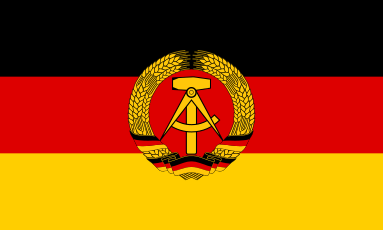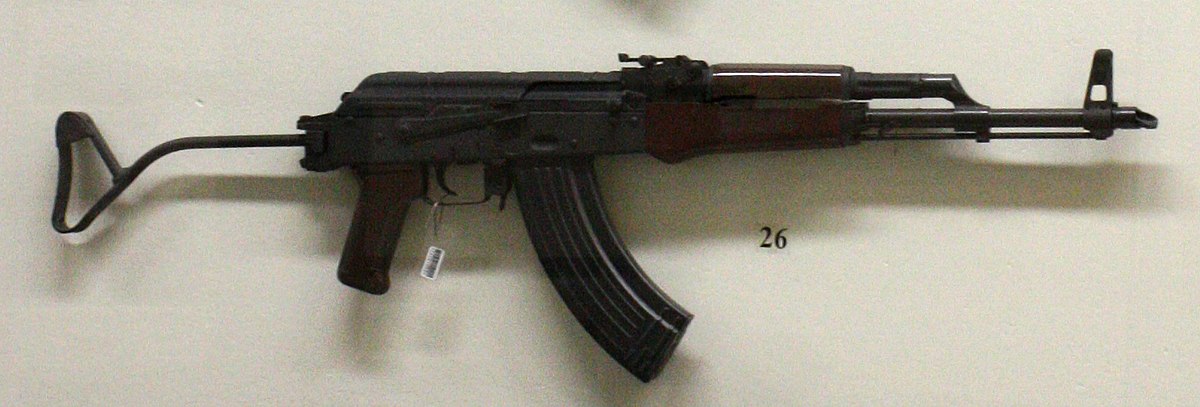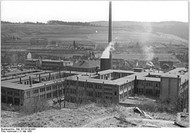In Pursuit of an Extinct ComBloc Relic: My Journey to Acquire and Build an Exceedingly Rare East German AK
Posted by Mark A. Taylor - AK Nut on Dec 14th 2023
Like many history obsessives, I’ve long been fascinated by the Cold War era rivalry between communist East Germany and the West. As the DDR faded into memory, I became fixated on locating and assembling one of their elusive AK rifles produced behind the Iron Curtain. This is the account of my all-consuming hunt for an extinct piece of geopolitical history.
Postwar Divide Births East Germany
After Germany's defeat in 1945, the country was split with the Soviet-occupied east becoming a socialist state allied with Russia, and the western zones evolving into a US-allied republic. The capital of Berlin was also divided. This fracture formed the front lines of Cold War tensions.

Flagge der Deutschen Demokratischen Republik
The East German Economy Reorients Toward Communism
As East Germany, or DDR, took shape under Soviet oversight, the state seized control of industry to form a communist command economy. Private ownership was outlawed and agriculture was collectivized. The industrial focus shifted to machinery, chemicals, and military production.
East German Defense Industries Come Under Central Control
All companies with military production capacity came under centralized state control as the DDR armed itself within the Warsaw Pact. Historical gunsmithing centers like Suhl were nationalized. To supply its troops, the DDR began domestic production of Soviet bloc weapons including the iconic AK-47 rifle.
The Ernst Thälmann Factory Commences AK Production
In 1956, the VEB Ernst Thälmann Suhl Factory marked “MPiK” initiated production of AK-47s patterned directly off Soviet prototypes. But by 1960, the improved and cheaper to produce AKM became the Soviet bloc standard. The mpik factory transitioned to stamping AKM receivers while retaining more machined components than typical Russian models.

Divergence from West German Gun Manufacturing
Meanwhile, on the western side of the inner-German border, companies like Heckler & Koch developed NATO stock small arms like the G3 battle rifle and MP5 SMG. As the DDR was beholden to Soviet manufacturing, East German arms followed Warsaw Pact standards and styling. This divergence in postwar experience between East and West had lasting impacts.
Demand Grows Along the Iron Curtain
Throughout the Cold War, East Germany remained a top supplier of AKs and other armaments to communist partner nations around the Eastern Bloc. DDR-made rifles saw use across the Iron Curtain in Asia, Africa, and the Middle East as Soviet influence expanded. But this bubble would soon burst...
A Vanished State Leaves Few Traces Behind
With astonishing speed after the fall of the Berlin Wall in 1989, the DDR ceased to exist entirely by 1990. The state-run defense industry was quickly dissolved and reintegrated into unified Germany. As East Germany faded into history, so did production of their niche AK variants after a mere 40 years.

The Thrill of the Hunt – Finding an Extant MPiK AK
As a lover of Cold War history, I had to own a piece of the vanished DDR. But with only limited production between 1956-1990, East German AKs with intact markings are scarce on the private market. Most were destroyed, retained by the unified German military or sold off, ended up scattered across the world. My search began.
Digging Deep to Secure an Elusive Kit
After months scouring European auction sites and forums, I finally located a collector claiming to have an original DDR kit. The photos looked perfect - clearly marked with the distinctive "mpik" code for the Ernst Thälmann Suhl factory. After paying the princely sum, waiting weeks on the delivery was agony. But opening the kit to finally hold those weighty stamped steel DDR-marked parts felt incredible.
Finding the Additional Pieces
With the correct kit secured, I sourced a US barrel, receiver, trigger guard, pistol grip, furniture, East German sling and some other miscelaneous East German parts and accessories to complete the build. Of course no fresh build is complete without a cleaning kit and maintenance tools so I looked around and eventually settled on a rare West German cleaning kit. That part was for fun kind of but counter-parts and reproduction components have to fill in the gaps since East German-specific accessory parts are virtually unattainable. But holding those scarce mpik marked internals in my hands made the investment worthwhile.
Meticulous Assembly to Create My DDR AK
Using every build guide and spec sheet I could gather on the model, I pressed, drilled, riveted and assembled the kit into a proper rifle over several weeks. Attending to precise details such as selector markings. The first moment I fired that iconic DDR rifle made the challenges worthwhile.
Owning a Fleeting Chapter of History
When I take my East German AK to the range today, I feel connected to the vanished DDR era that birthed it. Handling this extinct relic provides a visceral window into those tense Cold War decades of superpower chess which have left lasting impacts. For any amateur historian, owning such rarities is the ultimate thrill.
Next check out our latest post on Hungary's special breed of AK!

